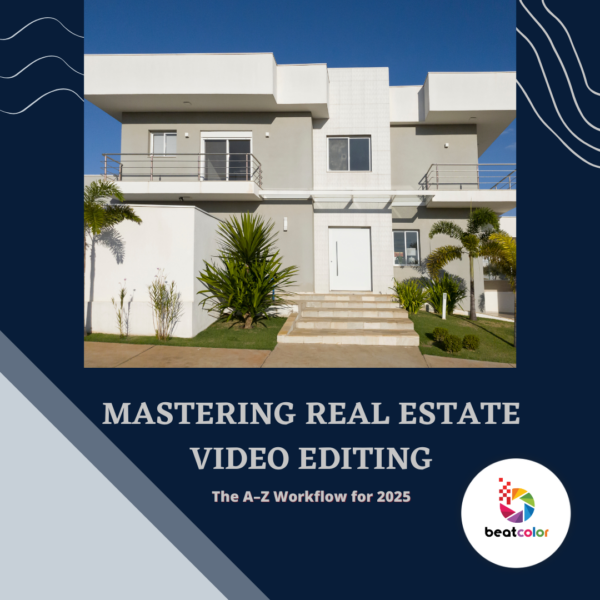Real Estate Photographer: A Modern Guide for 2025
In 2025, being a real estate photographer is more dynamic than ever. Technology, buyer expectations, and industry standards are shifting quickly. Today’s clients want more than just beautiful photos—they want results.
This guide dives into the newest trends, tools, and insights shaping the field. If you’re a real estate photographer, here’s how to stay ahead.
Visuals Still Rule the Market
Photos sell homes. That fact hasn’t changed. However, the demand for high-quality, immersive visuals has skyrocketed.
In 2025, listings with professional photography get more than double the views. Agents and sellers are investing more in visuals because it works. Buyers scroll quickly, and the first impression is all in the imagery.
Short Videos Are Winning Eyeballs
Scroll-based platforms like Instagram, TikTok, and Facebook Reels changed everything. Quick, engaging video content is now a must-have.
Buyers want to feel a space before visiting it. A 30-second walkthrough video can tell a better story than 10 stills. That’s why more photographers are learning video production skills.
Use gimbals, drones, and editing apps to create quick yet polished clips. These mini-tours improve engagement and keep clients coming back.
Drones Are No Longer Optional
In the past, drone photography was a luxury. Today, it’s fast becoming standard in real estate packages.
Aerial shots offer context—proximity to parks, pools, and neighborhoods. They give buyers a better understanding of the space from above. Modern drones are easier to fly, with improved safety and camera quality.
If you’re not flying yet, 2025 is the year to start.
AI Is Changing the Editing Game
Photo editing no longer takes hours. AI-powered tools speed up the process and boost consistency.
Tasks like sky replacement, object removal, and tone correction are automated. This gives photographers more time to shoot, market, and grow their business. Popular apps now offer AI presets and batch-editing features. Some even adapt to your style over time—like a virtual editing assistant.
The key is to combine automation with a personal touch.
Virtual Staging Adds Real Value
Buyers want to picture their future in a home. Virtual staging helps make that vision clear.
In 2025, more agents request digital furniture and design mockups. It saves time, money, and avoids moving physical furniture. Photographers now include staging options in their packages. Some even collaborate with interior designers to get it just right.
It’s not just about filling rooms—it’s about storytelling.
Sustainability Is a Selling Point
Eco-consciousness is affecting how people buy homes. Photographers can support this by highlighting green features in images.
Think solar panels, LED lighting, or smart thermostats. Even using low-emission transportation or sustainable gear can matter to clients.
Also, digital delivery of files and cloud storage reduce waste. Small steps make a big impression in a green-conscious market.
Branding Is the New Business Card
Your style should be recognizable—clients should know your work on sight. In 2025, branding matters as much as image quality. That means consistent tones, watermarking, and messaging across platforms.
Photographers are growing on Instagram, YouTube, and even LinkedIn. Your profile is often your first portfolio, so make it count. Invest in a sharp logo, build a clean website, and use branded templates.
Mobile Photography: Yes, It’s Legit
Smartphones are getting better every year. Many photographers now carry a phone-based kit for quick shoots.
Apps for mobile editing have also improved dramatically. While DSLRs still dominate, mobile shots can save the day. It’s not about replacing your gear—it’s about expanding your toolkit.

3D and Virtual Tours Are Expanding
Immersive experiences are no longer just for luxury listings. Even mid-tier homes are getting 3D walkthroughs and virtual tours.
These let buyers explore a property at their own pace. They also reduce unnecessary visits, saving time for all parties.
New tools make this easier than ever—without heavy equipment or tech skills.
Clients Want More Than Pretty Pictures
Today’s real estate photographers are content creators. They produce reels, stories, ads, and full visual marketing packages.
To thrive, you need to offer more than photos. Think: consulting, scripting, scheduling, editing, and digital delivery. Your success lies in creating a smooth, full-service experience.
Final Thoughts
Real estate photography in 2025 is about speed, quality, and versatility. Clients expect fast turnarounds and media that stands out in crowded listings.
If you’re a real estate photographer, the path forward is clear: Adopt smart tools, create multiple formats, and build a personal brand. Stay adaptable, stay creative, and always keep learning. That’s how you not only survive—but thrive—in today’s real estate market.
Read more:
AI Image Editing: Trends, Tools, and Tips
2025 Real Estate Photo Editing Trends: What’s New in Property Marketing?
How Professional Editing Services for Photographers Transform Your Work











